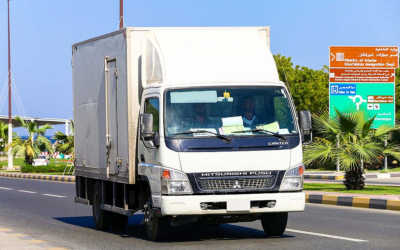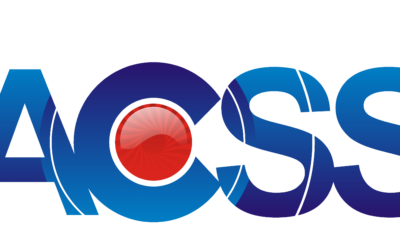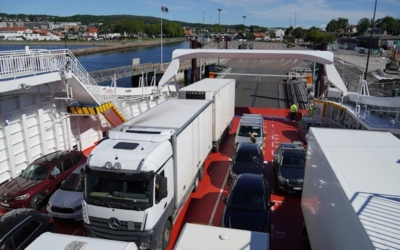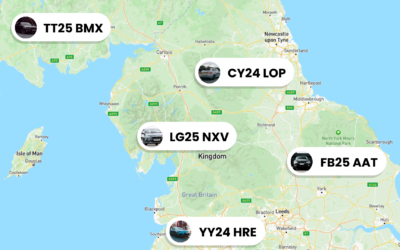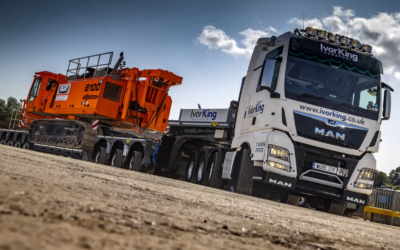Smart Routing & Driver Coaching to Cut Fleet Fuel Costs
Smart routing and driver coaching are two of the most practical levers a fleet manager can pull to reduce fuel consumption, lower operating costs and improve service reliability. This article walks you through the technologies, metrics and rollout steps you need to implement an integrated programme that delivers measurable savings — without heavy upfront disruption to operations. Read on for actionable guidance tailored for fleet managers who need results fast.
Why Smart Routing and Driver Coaching Matter
The fuel- and cost-saving case for combined strategies
Alone, optimised routes reduce distance travelled and idle time; alone, consistent driver coaching reduces wasteful behaviours such as harsh braking, excessive idling and speeding. Together, smart routing and driver coaching create a multiplier effect: better routes reduce exposure to congestion and unnecessary mileage, while coached drivers extract more miles per litre from every journey. For fleet managers this translates into lower fuel spend, reduced wear-and-tear and improved utilisation.
Operational benefits beyond fuel
The benefits extend past fuel cost. Expect reductions in maintenance spend as fewer harsh events and lower high-RPM driving reduce component wear. On-time performance improves because routes are more realistic and drivers understand how behaviour affects schedule adherence. Safety metrics typically improve too, since coaching targets risky behaviours — a win for compliance and insurance costs. Framing the programme around these broader outcomes helps secure buy-in from finance and operations stakeholders.
Key Technologies Behind Smart Routing
Route optimisation engines
Modern optimisation engines use a mix of deterministic and heuristic algorithms to solve routing problems at scale. Deterministic approaches give exact solutions for smaller, constrained problems; heuristics and metaheuristics (e.g. genetic algorithms) handle larger, real-world fleets faster. The outcome is routes that respect time windows, vehicle capacity and driver hours while minimising fuel use. When evaluating vendors, ask for examples of how the engine handles unexpected constraints.
Real-time routing & dynamic dispatch
Static routes are a lost opportunity. Real-time routing uses live traffic, incidents and updated ETAs to reassign tasks dynamically — cutting idling and detours. The ability to reactively rebalance loads and re-optimise stops during a shift is where most fleets unlock additional fuel savings and improved customer service.
Telematics and connectivity
Reliable data is the backbone of smart routing and driver coaching. GPS, CAN-bus and OBD-II feeds provide location, speed, RPM and engine diagnostics; integrated dashcams add context to events. If you’re evaluating solutions, check how they integrate with existing systems and whether they support open telematics standards. For more on telematics-driven savings, see our Fleet Telematics: Cost-Cutting Playbook for Managers and consider whether improved Tracking would solve your immediate pain points.
Driver Coaching: Metrics, Tools, and Best Practices
Essential driver metrics to monitor
Start with a focused set of metrics: idling time, harsh braking/acceleration events, average speed relative to limits, RPM distribution and fuel-efficiency score. These provide a direct line to fuel waste and are easily translated into coachable behaviours. Keep dashboards simple and role-specific so drivers and supervisors see what matters most to them.
Coaching workflows and communication
Balance in-cab, real-time feedback with structured post-trip reviews. In-cab alerts (audible or visual) are excellent for preventing immediate repeats of risky behaviour; post-trip reports fuel constructive coaching conversations. A weekly 10–15 minute review is often enough to keep improvements on track without overwhelming drivers.
Incentives and behaviour change techniques
Use positive reinforcement: recognition, small rewards and gamification have high uptake. Tie improvements to meaningful KPIs and celebrate progress publicly. Consistent coaching beats punitive programmes — drivers respond best when they understand benefits, receive clear guidance and see tangible recognition for improvements.
Ready to see these savings for your fleet? Book a quick demo with Traknova to see how our platform combines routing, coaching and telematics into a single workflow. Book demo to explore a tailored plan for your operation.
Implementing an Integrated Routing + Coaching Program
Data collection, integration, and dashboards
Consolidate telematics, dispatch and maintenance feeds into a single data layer. Your dashboards should show baseline fuel consumption, route efficiency and driver behaviour scores in one view so you can attribute wins. Integrations with your existing TMS or ERP reduce operational friction — ask vendors about APIs and data export options.
Pilot design and rollout considerations
Run a focused pilot: select representative routes and a cross-section of drivers. Define success metrics up front (fuel saved per km, reduction in idling, improvement in on-time performance) and run for 30–90 days. Pilots help you fine-tune thresholds for alerts and coaching cadences before a full rollout.
Change management and training
Secure leadership backing, then communicate the benefits clearly to drivers: better routes mean less stress and predictable schedules; coaching helps them earn rewards. Provide hands-on training for in-cab interfaces and supervisors’ dashboards. Address scepticism early by sharing quick wins from the pilot and ensuring a fair appeals process for flagged events.
Measuring Impact and Scaling Improvements
KPIs and how to calculate fuel savings
Key KPIs include fuel consumption per vehicle-km, idling minutes per shift, harsh events per 1,000 km and on-time delivery rate. To estimate fuel savings, compare baseline fuel per km to post-implementation figures and multiply by distance. When attributing savings, separate routing gains (reduced km) from coaching gains (improved fuel-efficiency score) to show stakeholder impact clearly.
30/90/180-day action plan
30 days: run pilot, baseline metrics and quick wins (speed limits, idle limits). 90 days: expand to high-impact routes, refine alerts and coaching routines. 180 days: scale across the fleet, integrate with maintenance triggers and reward schemes. This phased approach keeps risk low while locking in measurable returns.
Continuous improvement loop
Adopt an iterative approach: A/B test alternative routing parameters, try different coaching messages and track which interventions yield the best lift. Periodic reviews — monthly for the first six months, then quarterly — keep the programme aligned with changing operations and traffic patterns.
Conclusion
Implementing smart routing and driver coaching is one of the fastest, lowest-risk ways to cut fuel costs and improve fleet performance. Start small with a well-defined pilot, measure the right KPIs and scale what works. If you want a hands-on walkthrough tailored to your fleet, book a demo with Traknova to see a live configuration and estimated savings for your operation: Book demo or Contact us for a deeper consultation.
FAQs
How quickly can I expect to see fuel savings?
Most fleets see measurable improvement within 30–90 days of a pilot as routing tweaks and simple coaching reduce obvious waste. Full realisation across a fleet typically takes 3–6 months as behaviour and routes are optimised.
Will drivers resist coaching programmes?
Resistance is common but manageable. Emphasise positive outcomes, provide clear training, and use incentives rather than punitive measures. Transparent metrics and a fair dispute process reduce friction.
Do I need to replace existing telematics hardware?
Not usually. Many solutions integrate with existing telematics, dash cameras and TMS systems. When hardware upgrades are needed, they should be scoped to expected ROI and bundled into pilot budgets.
Can smaller fleets benefit as much as larger ones?
Yes. Even small fleets can capture significant percentage savings because optimisation and behaviour change reduce waste irrespective of scale. The key is consistent measurement and targeted interventions.
Your feedback matters. Did you find this guide useful? Please let us know what questions you still have — or share one success or challenge you’ve had with routing or coaching. If this helped, please share on LinkedIn or Twitter to help other fleet managers. What’s the single biggest fuel pain-point in your fleet right now?
Interested in a live walkthrough? Book demo with Traknova and we’ll tailor solutions to your routes and drivers. For other enquiries, visit our Contact us page.




